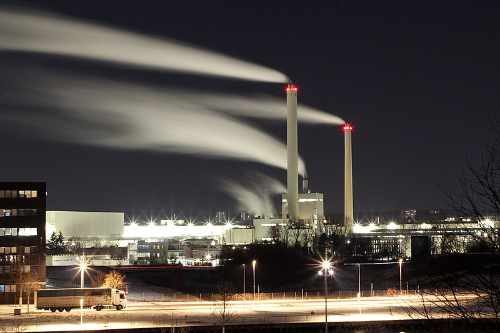



by David Reavill
“Energiewende” is the German National Renewable Energy Plan adopted in 2009. It has been the guiding legislation for the German transition toward a more environmentally responsible energy program. Last Saturday’s action in closing the final three Nuclear Power Plants in the country was one more step along this path.
On Saturday, Germany shut down its three remaining Nuclear Power Stations. This fulfilled a campaign promise of Chancellor Olaf Scholz to do away with a source of energy the Germans have viewed as highly dangerous, especially in light of the Nuclear accident in Fukushima, Japan, in 2011.
Phasing out Nuclear power now, at the beginning of Spring, would be seen to be the best time of the year. Germany is just now emerging from winter, traditionally the time of the country’s highest energy consumption, and entering what is usually a time of sunshine and Spring breezes, which will aid both wind and solar energy production.
Germany thereby launches the most significant energy “experiment” globally. It is the largest bet on renewable energy sources currently underway. But it is also merely a continuation of a trend that German began nearly 20 years ago. In the Industrial Era of the 19th and 20th Centuries, there was a direct correlation between the amount of energy consumed by a nation and its economic production.
As factories produced more and consumed more energy, the economy grew—a nearly one-to-one rate of growth between energy consumption and industrial output. Economic historians often used energy consumption to determine whether a country was “first world” (an advanced country) or “second world (not advanced/industrial). Underdeveloped agrarian countries consumed very little energy.
Many assume that technology has changed all that. That a country can be nearly as productive in the Internet era as before in the Industrial Era. I’m not convinced. I think something else may be occurring. That many of the advanced Western Countries have just shipped off industrial production (and its energy consumption) to overseas manufacturing hubs, like China.
It’s an interesting debate, and over time we will see which side is right. In the meantime, it’s apparent that German politicians proclaim that they can fill the gap left by shutting down Nuclear Power with the use of renewables.
I bring your attention to the attached chart; it is remarkable in so many ways. As you will see, Energy Production in Germany peaked 16 years ago. Whether through strategic planning or just through happenstance Germany began to cut back on its own energy production in the mid-1990s. This latest closing of the Nuclear Power Plants is just a continuation of the German policy of producing less energy. They did the same thing with coal over the same time, reducing coal production by over 40%.

But just because Germany is producing less energy does not mean that they are consuming less energy. According to the latest report from the US Energy Information Agency, Germany is now importing three times as much total energy as it consumes. Like its industrial base, Germany has “off-shored” its energy base.
It is also true that Germany has indeed increased production by renewables, chiefly wind, and solar, but so far, that increase has been marginal. By the most optimistic estimate, and there are several different estimates out there regarding Germany’s energy production; the most optimistic estimate is that renewables currently provide less than one-third of Germany’s annual energy production. Replacing the energy produced by closed nuclear plants will require a 50% increase in renewable production. Something that most analysts don’t believe is in the cards.
Having said all of this, it’s important to point out that Germany has stepped up to the plate and provided us with the most significant “real world” experiment in modern energy production.
However, in order to receive valid results, there are a couple of parameters that need to be established.
First, when comparing any of the energy sources, we need to measure them versus total German energy consumption. I note in many of the reports that they measure renewable production, for instance, against German Energy Production. But German Production continues to decline, so the contribution of any of its components grows automatically, relative to declining production. It’s consumption that counts.
Second, German energy imports need to also be carefully monitored. If, for instance, Germany were to replace the energy produced by Nuclear, with, for instance, Norwegian gas, that should not be considered a success for German renewables.
Finally, a note for the energy researchers. There are several reports published that are mathematically incorrect. The numbers, and therefore relative performance, simply do not add up. So beware.
Today, Germany has begun a brand new approach to energy production and consumption. It is a wonderful opportunity for the world to watch how this advanced economy adapts to its new energy constraints.
